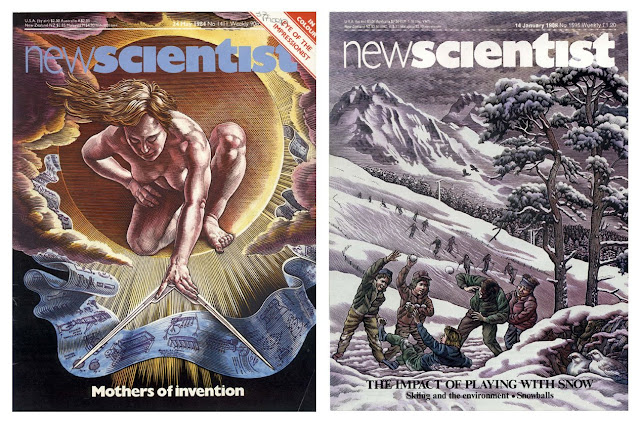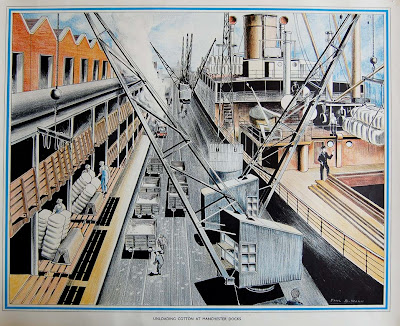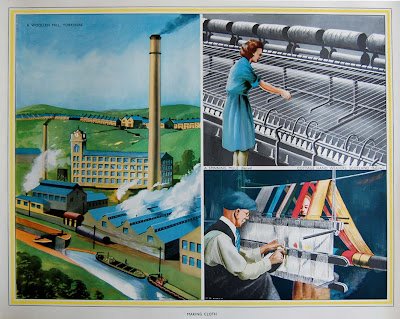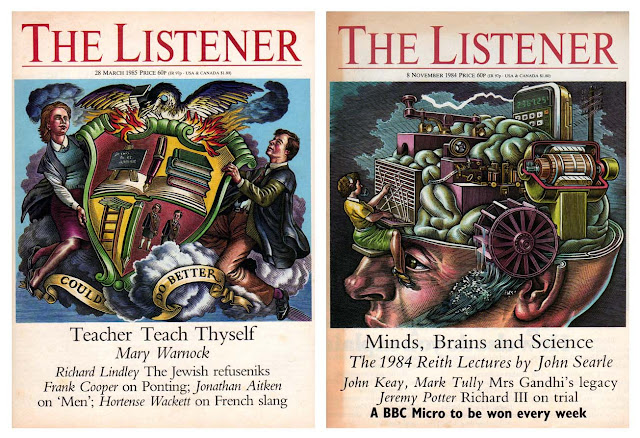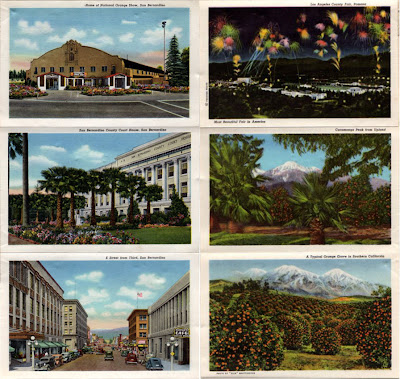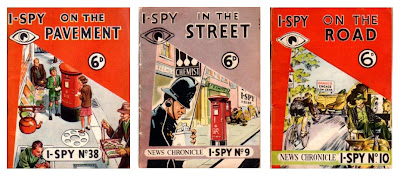
This terrifying image of Margaret Thatcher is all the more scary because the portrayal of her features is only millimetres away from the flattering image that her supporters worshipped. It is the work of the illustrator, Bill Sanderson, whose work was characterised by an uncanny skill in mimicking the techniques of Victorian wood and steel engraving using scraper board. The trick was in applying it to contemporary subject matter and infusing the image with a turbulent, linear driven sense of movement.
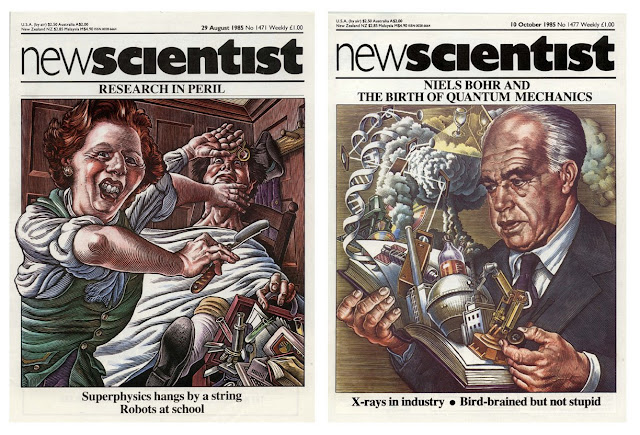
These covers for New Scientist are from 1984 to 1988, a period when this magazine was one of the last to regularly commission illustration for the cover. There was a good fit to the relationship – Sanderson’s images recall the wonderful world of Victorian scientific illustration. It’s a pleasure to admire his drawing skills and the subtle use of colour to enhance the period feel. The near Baroque spatial qualities add another dimension. All is described with a sure touch and crispness of line and contour.

I remain highly suspicious of commentators who regularly evoke past golden ages, usually with object of denigrating the present, but I must confess that, as far as illustration goes, the decade from the mid-seventies to the mid-eighties seems like just such an age. Artists such as Peter Brookes, Mick Brownfield, George Hardie, Peter Till, Bush Hollyhead, Barry Craddock and James Marsh were producing witty and innovative illustration in response to a genuine demand from the printed media. Bill Sanderson is part of a talented generation that matured in the 1970’s and has carried on working in much the same way to the present. There is a generous selection of his work on his own website that can be viewed by clicking
here. In 2005 he won an award for book cover design from the V & A, details of which can be seen
here. Authors whose books he has illustrated include Harry Harrison (interviewed
here) and Felix Dennis.
